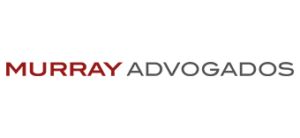Revenue and EBITDA also seen lower as volumes and prices decline
07/29/2025
Vale is expected to report weaker results in the second quarter, due to lower iron ore prices during the period. According to projections from five firms consulted by Valor—Citi, Itaú BBA, BTG Pactual, Goldman Sachs, and Ativa Investimentos—the mining company’s net income, revenue, and EBITDA should all fall short of the results posted between April and June of 2024. Vale is scheduled to release its earnings after markets close on Thursday (31).
The company’s revenue is projected to reach approximately $8.8 billion, down 11.1% from the same period last year. Net income is expected to average $1.6 billion, a drop of 40.7%. EBITDA is forecast to fall 18.9%, to $3.1 billion.
Ativa noted that even though Vale posted higher-than-expected production in the second quarter, weaker prices disappointed expectations.
Itaú BBA said the quarter was marked by rising inventories and a focus on mid-grade products.
Production and sales data released by Vale on July 22 showed that total sales of iron ore fines, pellets, and run of mine (ROM), a type of raw ore, reached 77.35 million tonnes in the second quarter, a 3.1% year-over-year decline.
Sales of iron ore fines alone totaled 67.68 million tonnes, 1.2% lower than the same period in 2024. Pellet sales dropped 15.6% year over year to 7.48 million tonnes.
Vale attributed the lower iron ore sales to its strategy of optimizing its product portfolio, with a concentration of shipments to China, leading to longer delivery times. Stock rebuilding after first-quarter production and shipping constraints also contributed to the lower sales.
The lower volumes came alongside weaker realized prices. The average price for Vale’s iron ore fines in the second quarter was $85.10 per tonne, down 13.3% from a year earlier. Pellet prices averaged $134.10 per tonne, a 14.7% decrease. In both cases, the declines reflected falling international benchmarks.
BTG Pactual said the Q2 production and sales figures reinforce Vale’s message that market conditions for high-grade ores remain weak. “While we believe Vale’s focus on product mix is the right call in a volatile market, it also highlights how unfavorable conditions remain for higher-quality ores,” the bank said.
Goldman Sachs pointed to lower iron ore prices and a stronger Brazilian real as potential risks going forward, both of which negatively affect Vale’s profit. Still, the bank viewed the mining giant’s strategic positioning favorably: “The reality, not just for Vale, is that mining quality is declining and the market is not rewarding it. So it makes sense to conserve iron molecules to extend output or reserve higher-quality ore for when prices justify it.”
Citi noted that Vale’s iron ore output reached 151.2 million tonnes in the first half, putting the company on track to meet its 2025 guidance of 325 million to 355 million tonnes.
Source: Valor International
https://valorinternational.globo.com/
